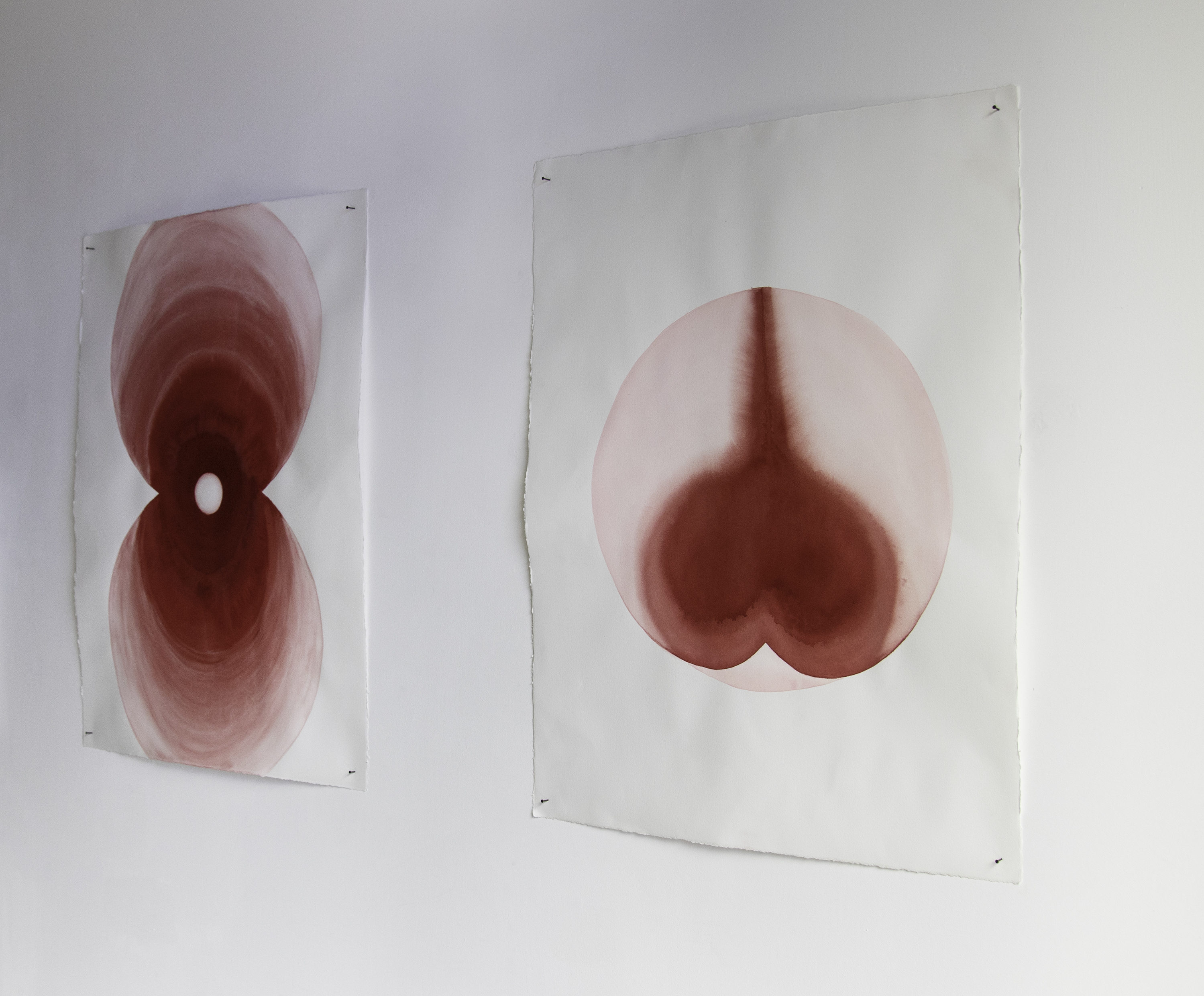Curation and words by Maddalena Iodice
29th of November, 2024 - 21st December, 2024
Group show at Guts Projects at Guts Gallery, London
https://musemagazine.it/articles/body-mould-en/








“ I, too, overflow; my desires have invented new desires, my body knowsunheard-of songs.” – Hélène Cixous
We are containers to be contained, hormones to be regulated, saved from thedysfunctionality of our ambiguous bodies. We are subject to the emotional, thesensuous, the erotic, the manifestation of invisible energies, and hence hysterical,monstrous bodies. How, then, to rule the uncanny? How to keep it concealed? Ourmonotheist, phallocentric Western cultural system did so by imposing a binarylanguage and exclusive system of representation for us to define ourselves with.Censor the body and you censor breath and speech at the same time. Fragmented and stigmatised, we then might ask ourselves to what degree is disgusttowards our bodies innate or learned? We are mould to be bleached when we don’tfit, when we bleed, when we are not “natural”, when we lack, when we overflow. If weare unknowable, we are unthinkable, then uncontrollable. Yet mould is a fungi, itsmurky organic matter inherently alive and capable of infinite generative power. It has a language of its own that allows its mycelium and its spores to communicate,sustain each other, and exist. We shall learn from the earthly organic matter that surrounds us. We shall reclaimour mould, our unruly flesh, our monstrosity, our unsettling erotic power. We shalloverflow and propagate endlessly. Body Mould is an invitation to tear apart, revealour innermost depths and in doing so reclaim our uncanny bodies, our language,creating words of our own to speak our history, our dancing, our loving, our work, ourlives. Hailing from different countries, paths, and artistic journeys, the emerging andearly-career artists presented in the exhibition confront stigmas through their ownsituated perspective. Their urge to constitute a visual language that expresses thetruths and fluctuations of their own bodily experience, situates them in a lineage ofartists whose pioneering practices paved the way for subaltern voices to exist in ourculture and in the history of art.
From Georgia O'Keeffe who used voluptuous painterly gestures as words to herrelationship to the earthly landscape she was surrounded by, to Ana Mendieta wholaid down on the earth, floated in water, evoking through her bodily traces theuniversal energy that runs through insects, humans and plants alike. I think of LoieFuller and Rebecca Horn, whose performative interventions saw their limbslengthened, extended as if in the attempt of taking up space. Maria Lassingarticulated the experience of inhabiting a body through a series of self-portraitsrooted in what she called “body awareness”, while Claudette Johnson’s images ofBlack women like “And I Have My Own Business in This Skin” (1982) affirmed theBlack subject outside of a colonialist perception of Blackness. Helen Chadwick’sresearch on gender led her to question Western dual oppositional structures creatingrepresentations that leave space for ambiguity and a disquieting sexuality. Almostten years after her “Enfleshings” series (1989), which to Chadwick embodiedselfhood as conscious meat, Sarah Lucas was using humour to unearth obsceneparadoxes created by patriarchal constructions, while Marlene Dumas wasportraying the human figure in exploration of themes of race and gender, sensualityand violence, personal and public identities. And yet, the urgency of finding materialsto transcribe the body and foster its own language is still here.Fast forward, the list goes on:Isabella Benshimol Toro’s “Painting about old me” (2024), suggests an entrancepoint, and a potential trajectory to experience the show. Here, a discarded windowfrom a British council house is the frame for a composition of resin-coated usedclothing. Losing their original purpose, jumpers, pants and shirts become painterlygestures, visceral fluctuations that seem to expose the chaos of human existence.In Melania Toma’s research, organs, bones, flowers, spores, and bacteria move tothe rhythm of a synchronous dance. “Door I” from the “Doors of the Kagneji” series(2024) and “Small Decomposer” (2024), articulate the interconnectedness of organicmatter and play as a reminder that human and other-than-human animacies are one.We are one with our mould. One with the earth.“Loins” (2024), by Kesewa Aboah, poses a visual synecdoche, where the loins echothe body as a whole. The body itself becomes a mark, a physical gesture on canvas,the pressure of flesh and bones registered in dry pigments and walnut oil. Theimprints, traces of the artist’s body or the presence of friends and loved ones, part ofAboah’s community, constitute a threshold between personal and universalcorporeality. Blurring the lines between painting and ready-made sculpture, “Unhookme” (2024), by Paula Parole, is wrapped in fishnet tights, which, leaving an apertureon the canvas surface, show the back of a figure wearing a black lace bra. Parolecleverly plays with constructed notions of seduction and gender roles offering a wittytake on the codes of constriction the female body has been subject to. Poeticallycontrasting such a state, Paula Zvane lets a hair-like sculpture creep through the
space in the form of what resembles a lace tapestry. “Hair lace” (2024), made ofhardened organic linen fibres is to the artist a bodily extension, an act ofself-affirmation thinking anew the way we make space and propagate our presenceand our erotic energy.The erotic is not a question of what we do; it is a question of how acutely and fullywe can feel in the doing.4 The research of Giuditta Vettese responds to the urge oflistening to our innermost pulsations. The series “Interno Astratto” (2024), (AbstractInsides, 2024) represents an instinctual vocabulary to articulate the process ofbecoming attuned to our primordial, ecstatic energy; and the bronze sculpture “LaFiamma che non Brucia” (2024), (The Flame that does not Burn, 2024) a pagan altarfor these mystical forces to be evoked, to manifest.To express the body is to be able to confront ourselves, to be vulnerable, to benaked, to be flesh. Just like in Inès Michelotto's self-portrait “The way I feel at times”(2024), which closing the show powerfully evokes the words of French writer andcritic Helene Cioxus: “You only have to look at the Medusa straight on to see her.And she's not deadly. She's beautiful and she's laughing”.